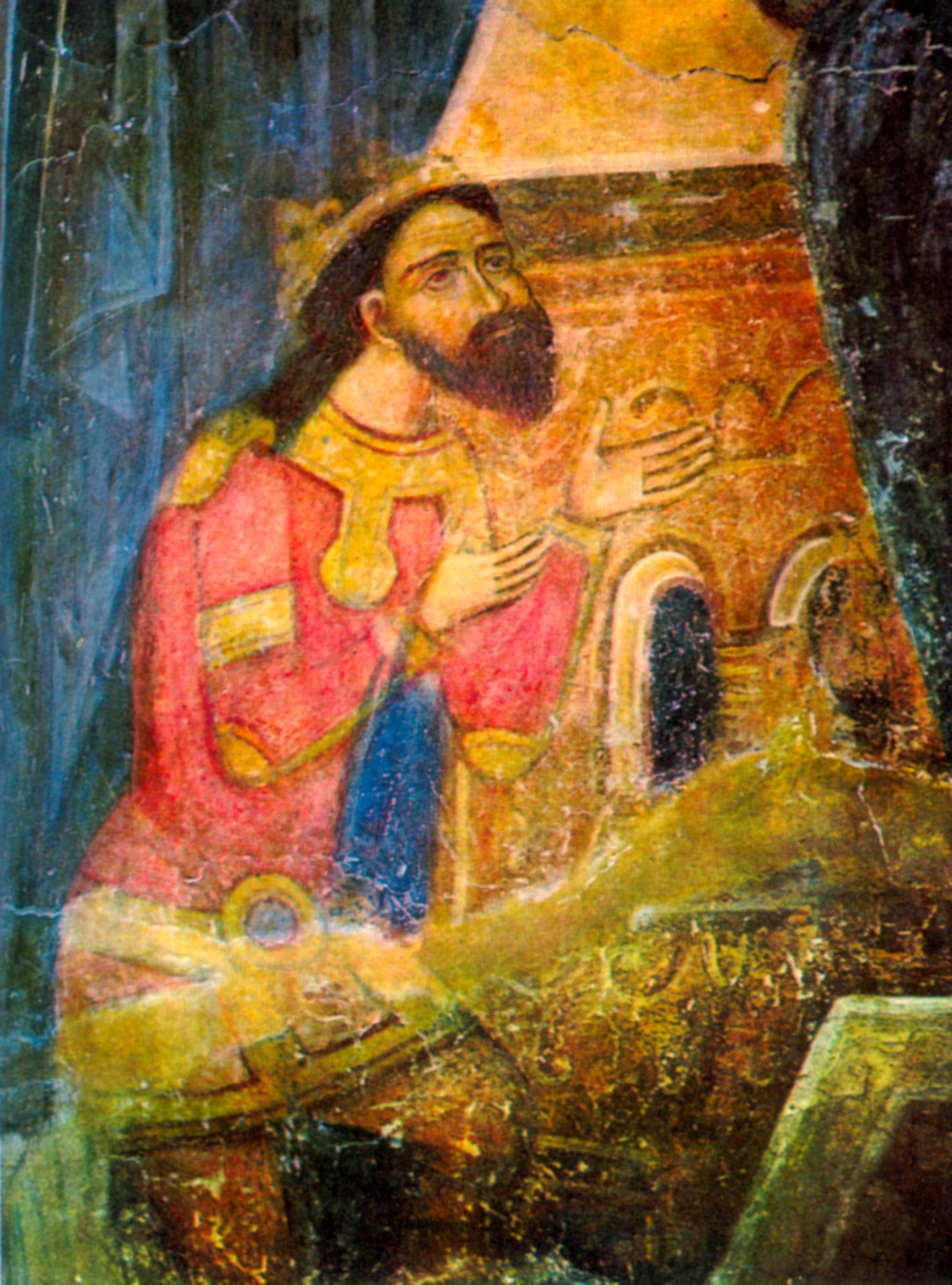- Basarab I of Wallachia
Infobox Romanian Royalty|monarch
name =Basarab I
title =Voivode of Wallachia
caption =Basarab I (fresco in Argeş)
reign =c. 1310-1352
coronation =
othertitles =
full name =
native_lang1 =
native_lang1_name1=
native_lang2 =
native_lang2_name1=
native_lang8 =
native_lang8_name1=
predecessor =Thocomerius (Tihomir)
successor =Nicolae Alexandru
suc-type =
heir =
queen =
offspring =Nicolae Alexandru
royal house =House of Basarab
dynasty =
royal anthem =
father =Thocomerius (Tihomir)
mother =
date of birth =
place of birth =
date of death =1352
place of death =
date of burial =
place of burial =|Basarab I was an early ruler of the
principality ofWallachia from perhaps as early as 1310 until 1352. He is sometimes referred to as "Întemeietorul" ("The Founder"), given his role in the creation of the state, together with his position as common ancestor of rulers in theBasarab dynasty .His name is probably of Cuman origin, meaning "Father King", being derived from "basar" meaning "to rule" and "aba" meaning "father". In late 19th century,
Bogdan Petriceicu Hasdeu proposed the idea that his name isautochthonous , from "ban" meaning "ruler", and the Dacian word "saraba" meaning "head" (still present in someRomania n regions as "sarâmb"), but nowadays, this etymology is disregarded. TheViennese Illuminated Chronicle clearly attributes Basarab as beingRomanian (vlach).Basarab's father, Thocomerius, was probably the first voivod to rule the whole of
Wallachia . Basarab became a vassal of theHungarian Kingdom , but between 1324-1325, he turned against the Hungarian king. In a Hungarian document issued by Charles I (dated26 July ,1324 ) he is referred to as "our Transalpine voivode" ["Woiuodam nostrum Transalpinus", Vasary, p. 150] and almost a year later, in a diploma of18 June 1325 , he is referred as "Transalpine Bazarab, unfaithful to the king's holy crown". ["Bazarab Transalpinum sancte regie corone infidelem", Vasary, p. 150]In 1330 he defeated his Hungarian
overlord Charles I of Anjou at theBattle of Posada , thus gaining the independence of Wallachia. One of the most important records of this battle is the "Viennese Illuminated Chronicle ".Notes
References
*
Neagu Djuvara , " [http://www.itcnet.ro/history/archive/mi2000/current8/mi53.htm Iarăşi despre Negru Vodă şi "Descălecătoare"] ", "Magazin Istoric", 8/2000
*Vasary, Istvan, "Cumans and Tatars",Cambridge University Press , 2005
Wikimedia Foundation. 2010.
